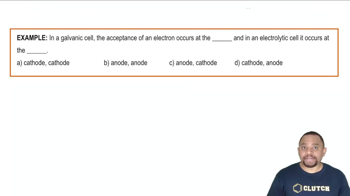Here are the essential concepts you must grasp in order to answer the question correctly.
Electrolytes
Electrolytes are substances that dissociate into ions when dissolved in water, allowing the solution to conduct electricity. They are classified into strong electrolytes, which completely dissociate into ions, and weak electrolytes, which only partially dissociate. Nonelectrolytes do not dissociate into ions and therefore do not conduct electricity.
Recommended video:
Electrolytes and Strong Acids
Strong vs. Weak Electrolytes
Strong electrolytes, such as HBr and NaClO4, fully ionize in solution, resulting in a high concentration of ions. Weak electrolytes, like HF and NH3, only partially ionize, leading to a lower concentration of ions. The degree of ionization is crucial for determining the conductivity of the solution.
Recommended video:
Weak Electrolyes and Weak Acids
Examples of Electrolytes
Common examples of strong electrolytes include strong acids and soluble salts, while weak electrolytes include weak acids and bases. For instance, HBr is a strong acid and fully dissociates, while HF is a weak acid and only partially dissociates. Understanding these classifications helps in predicting the behavior of substances in solution.
Recommended video:
Electrolytic Cell Example
 Verified step by step guidance
Verified step by step guidance


